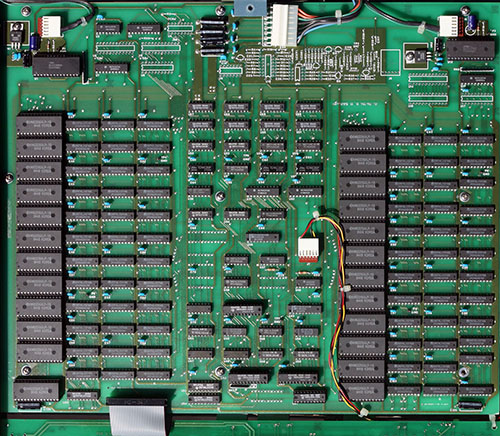Feed SparkFun Electronics [copy] http://www.sparkfun.com/feeds/news has loading error: cURL error 22: The requested URL returned error: 405
Feed The RFID Weblog [copy] http://www.rfid-weblog.com/index.rss has loading error: cURL error 22: The requested URL returned error: 404 Not Found
Feed tqfp.org [copy] http://tqfp.org/rss/ has loading error: A feed could not be found at `http://tqfp.org/rss/`; the status code is `200` and content-type is `text/html; charset=utf-8`
Free Stuff - July 2025
The belated July 2025 recipient for the Great Scott Gadgets Free Stuff Program is Murat Sever, a professor from Turkey who teaches at TOBB ETU University and recently ran a workshop titled “Simple Replay Attack Demo with GNU Radio.” In this workshop, Murat utilized several open-source software and hardware tools to demonstrate how to receive and transmit RF signals. Workshop participants then used SDR and GNU Radio to perform replay attacks with the captured radio signals. We sent a handful of HackRF Ones to Murat for participants to learn and experiment with in this workshop. He has also informed us...
Носить электроны в решете, или зачем радиолампам дырявые аноды?

Радиолампы (они же — электронные лампы), несмотря на вопиющее моральное устаревание, до сих пор интересуют и интригуют, взять тот же пресловутый «ламповый звук». Интересны и их история, технология, конструирование, вплоть до самостоятельного любительского изготовления лабораторных образцов. Простой вопрос в этом смысле неожиданно увлёк в дебри электровакуумной технологии. Итак — зачем же некоторым приёмно-усилительным лампам (ПУЛ) сетчатые аноды — натурально, решето, тогда как этот электрод должен принимать поток электронов с катода и получше рассевать образовавшееся тепло?
Читать далееVEF ТА-12. Оживляем раритетный телефон с АОН

Приветствую всех!
Пожалуй, этот девайс стал одним из самых запоминающихся артефактов проводной телефонии. Именно на базе этого телефона было создано немалое количество определителей номера на процессорах КР580ВМ80А и Z80.
Так уж получилось, что ко мне в руки попал такой АОН. Как насчёт посмотреть, как он устроен, и вернуть его к жизни? Именно этим мы сейчас и займёмся.
РУСЬ - 6с.Free Stuff - June 2025
The belated June 2025 recipient for the Great Scott Gadgets Free Stuff Program is Joe Caton from the United States! Joe has requested a HackRF One for his senior project. He has the opportunity to work with a local wildlife preserve and assist them in an ongoing project to track and study the behavior of the large population of eastern box turtles nearby. Joe will be aiding the nature center in developing quality, low cost alternatives to their current tracking technology. He plans to refine their current VFH tracking modules and implement HackRF One into a more compact system that...
Free Stuff - May 2025
The belated May 2025 recipient for the Great Scott Gadgets Free Stuff Program is Nagamani C Gunjal, a university student who has requested a HackRF One for an academic project that involves research and demonstration of real-world vulnerabilities in consumer and commercial drones by analyzing and manipulating radio communication protocols. Her focus is on ethical hacking and the security testing of drones that operate using RF signals, specifically targeting control signals transmitted between the radio transmitter and onboard radio receiver module of the drone. This project is part of a broader study on UAV (Unmanned Aerial Vehicle) security with an...
Name that Ware September 2025

The Ware for September 2025 is shown below.
Thanks to Michael Dwyer for submitting this ware! I originally contemplated only showing the digital board to make the ware more challenging, but the analog part is so chaotically gorgeous I had to share it out of the aesthetic appreciation.
Despite the size and complexity of the system, there is no CPU. There was a day and age where it was fairly common to design systems without one. In many cases, a ROM-based FSM was more economical, offering better performance and consistent timing. This gave them an edge over MCUs when the flexibility afforded...
How to Install LM Studio – Step-by-Step Guide (2025)
LM Studio is a free, open-source desktop application that lets you download, run, and experiment with large language models (LLMs) entirely offline on your Linux machine. Unlike cloud-based AI services, LM Studio gives you complete control over your data—nothing leaves your computer. It supports hundreds of models from Hugging Face and other repositories, including Llama, […]
How to Install Logseq – Step-by-Step Guide (2025)
Logseq is a free, open-source knowledge management and note-taking tool that uses bullet journaling principles and bi-directional linking to help you build a networked thought system. Unlike traditional note-taking apps, Logseq connects ideas across notes, making it ideal for researchers, writers, and developers who need to organize complex information. It stores notes locally in markdown […]
How to Install Frog – Step-by-Step Guide (2025)
Frog is a free, open-source OCR tool that extracts text from screenshots, images, and QR codes. It runs offline on your Linux desktop, making it essential for capturing text from PDFs, videos, or any visual content you can’t copy-paste. Why Should You Install Frog? Frog solves the frustrating problem of text locked in images: Extract […]
How to Install Buzz – Step-by-Step Guide (2025)
Buzz is a free, open-source audio transcription tool that brings OpenAI’s Whisper models to your Linux desktop. It runs completely offline, ensuring your files never leave your machine—crucial for privacy. Buzz processes everything locally using AI models trained on diverse languages and accents, supporting batch transcription, real-time recording, and multiple output formats. Why Install Buzz […]